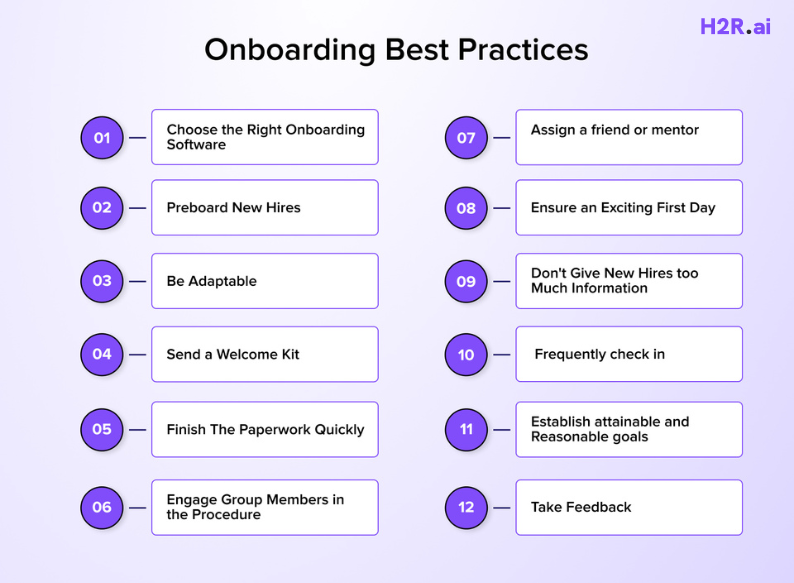Why Is Employee Onboarding Important?
Integrating new hires into the company’s culture is seamless with a proper onboarding strategy. With efficient onboarding, employees will be equipped with a high level of satisfaction during their tenure which is bound to have positive repercussions in the long run.
Businesses that strategically choose training are also supported through effective communication and systems foster a dynamic work environment for everyone involved.
Why Is Employee Onboarding Key to Retention?
Employees are likely to remain in an organization if they are welcomed and adequately supported, especially during the first months of joining. They stand to lose one or two years of salary if they don’t get these essentials. Employees are increasingly dissatisfied with a company’s onboarding experience as they tend to promote mistreatment, lack of clarity, ease of confusion, and ultimately lead to workforce exits.
Companies that employ efficient and effective workforce onboarding principles create value for employees and stand to benefit through loyalty and decreased turnover.
Why Is Employee Retention Important?
High attrition rates can be expensive and disruptive. Losing an already trained employee means a new cycle of hiring. This results in a drop in productivity and an increase in costs. Additionally, to maintain a stable and engaged workforce, organizations need a strong retention strategy with a hassle-free onboarding process.
12 Employee Onboarding Best Practices That You Cannot Afford to Miss

1. Choose the Right Onboarding Software
This is where investing in employee onboarding software can go a long way in streamlining the entire process. It takes care of files, monitors the progress, and makes sure everything is in accordance with legal guidelines, enabling HR teams to dedicate themselves to delivering a meaningful experience instead of having to manage paperwork manually.
2. Communicate Before Initial Onboarding
Pre-onboard before your new employees even step through your door. Email them outlining what to expect, introducing them to company values, and providing resources to make their progress easier. Preliminary communication creates anticipation and calms first-day anxiety.
3. Practice Pre-boarding Employees
Pre-boarding sets the stage for a seamless first day. Provide access to training materials, invite new hires to team chats, and complete necessary documentation in advance. This helps them feel prepared and connected before officially starting.
4. Send a Welcome Kit
Sending a personalized welcome kit that includes branded merchandise, a welcome letter, or critical documents is a great way to make a positive first impression. It indicates that the company is putting its employees first from the start.
5. Create First-Day Preparations
Make sure things are ready before the employee comes. If based at the office, set up their workspace, provide login credentials and schedule a structured first-day agenda. A clear plan of action gives certainty and confidence.
6. Introduce New Hires to the Team
Encourage social integration by introducing new hires to their colleagues. Host a welcome lunch, schedule informal meetings, or create a virtual introduction if working remotely. Strong peer connections improve engagement and collaboration.
7. Assign a Mentor or Buddy
Pairing new hires with an experienced employee eases their transition. A mentor or buddy can answer questions, offer guidance, and help them navigate company culture, fostering a supportive work environment.
Perfect Employee Onboarding at
Your Fingertips
8. Set Realistic and Attainable Goals
Clearly outline short-term and long-term goals for new employees. Setting achievable milestones ensures they stay motivated and understand their contribution to company objectives.
9. Share the Employee Development Plan
Provide a roadmap for career growth from the beginning. Show employees how they can advance within the organization, access learning opportunities, and develop professionally. Growth prospects increase job satisfaction and retention.
10. Avoid Overwhelming New Hires with Information
Break down training and information into manageable sections. Overloading employees with excessive details can lead to confusion and stress. Use a structured learning approach to ensure better retention of information.
11. Check-In Frequently
Frequent check-insdiscover potential troubles in advance. Set up 1:1 meeting to clear out any worries, give feedback, and make sure that employees are feeling supported along the way.
12. Collect Feedback
Motivate new employees to convey their onboarding journey. To do so, use either surveys or direct conversations to understand what went well and what can be improved. This makes the future onboarding of new hires better.
Wrapping Up
Implementing an effective onboarding process as a strategy leads to better engagement, faster productivity, faster onboarding and better retention. These 12 best practices for employee onboarding will help businesses create a positive experience that inspires loyalty and longevity.
Why Choose H2R.ai for Employee Onboarding?
H2R.ai with its advanced employee onboarding software is the most user-friendly and effective employee onboarding software. Our platform automates admin tasks, personalizes training experiences, and ensures seamless integration for new hires. With H2R.ai, you can create an onboarding process that not only improves retention but also drives business success.




